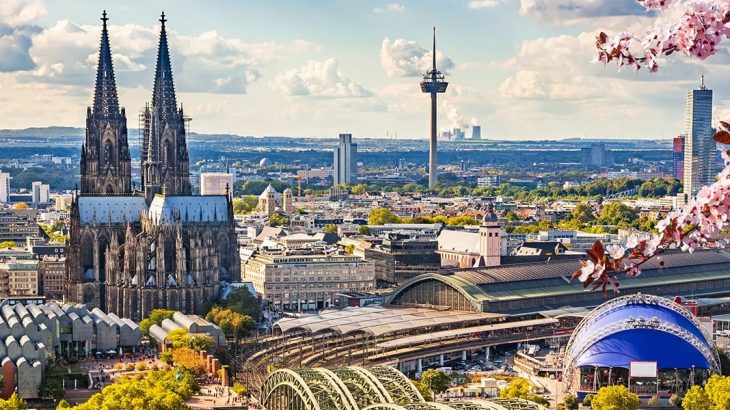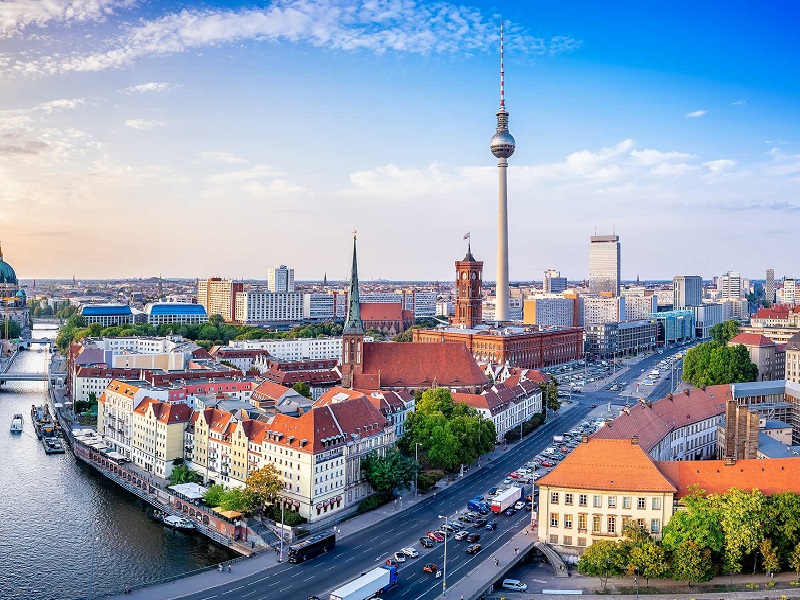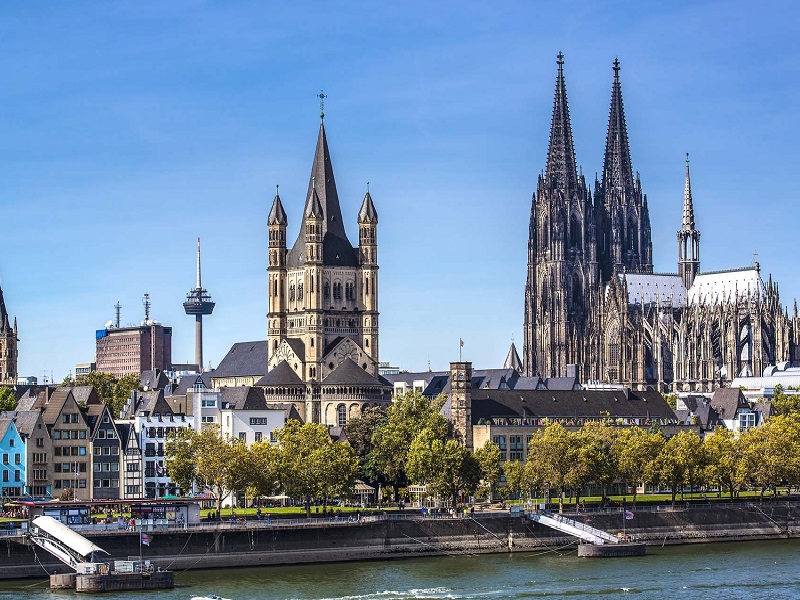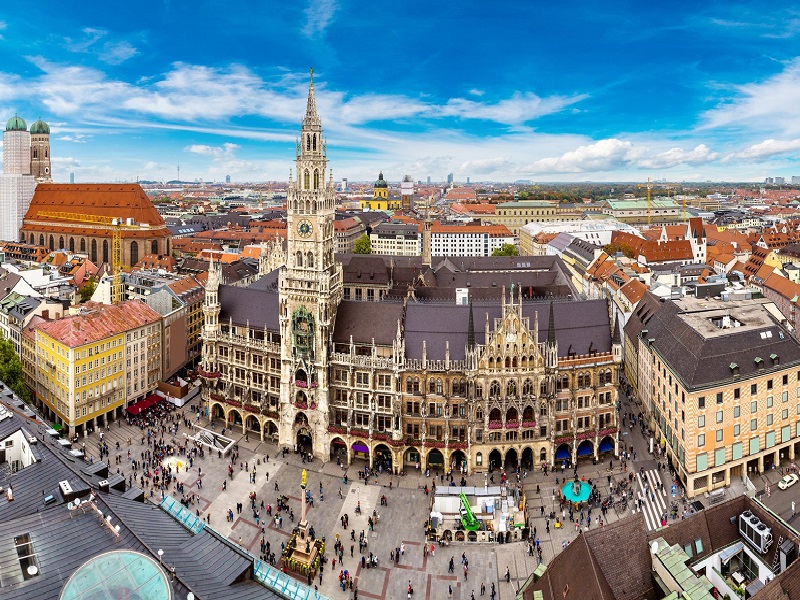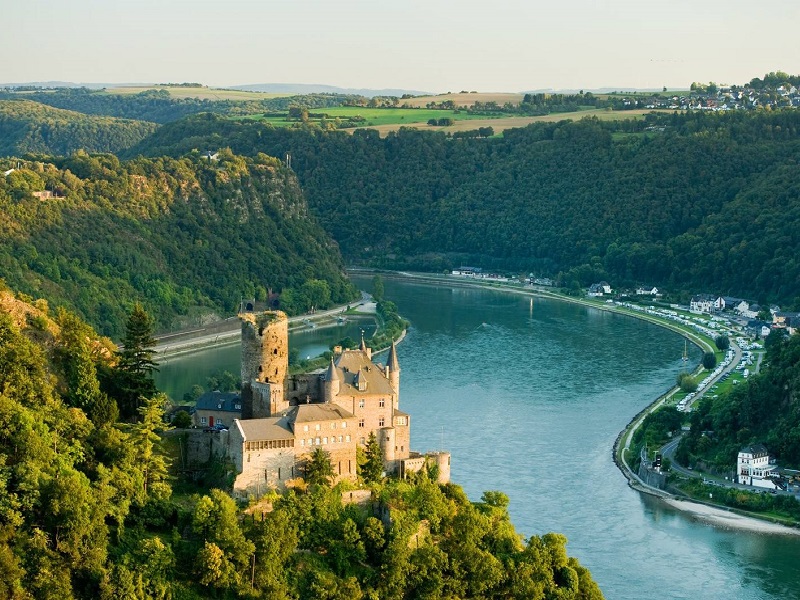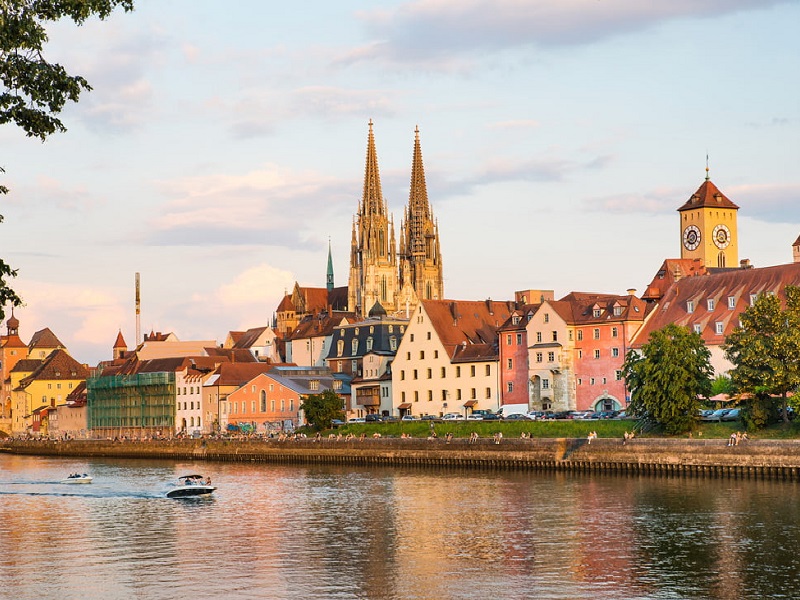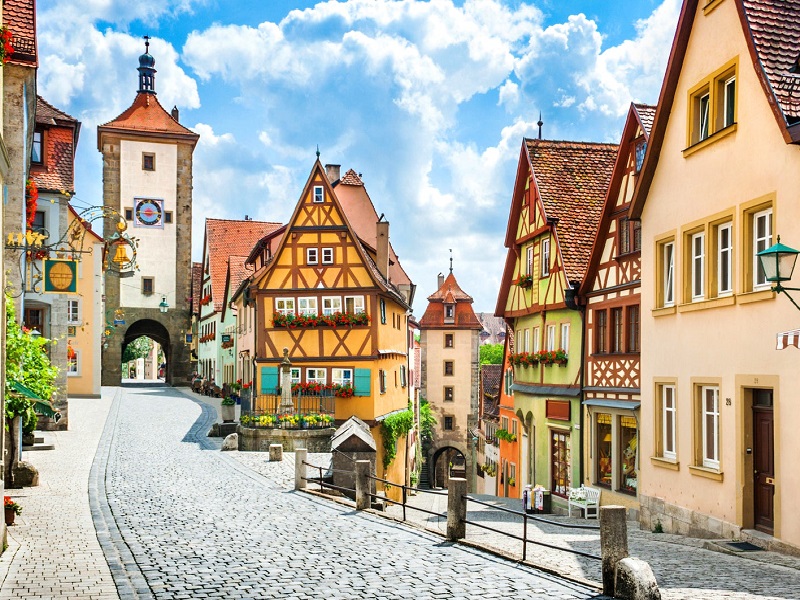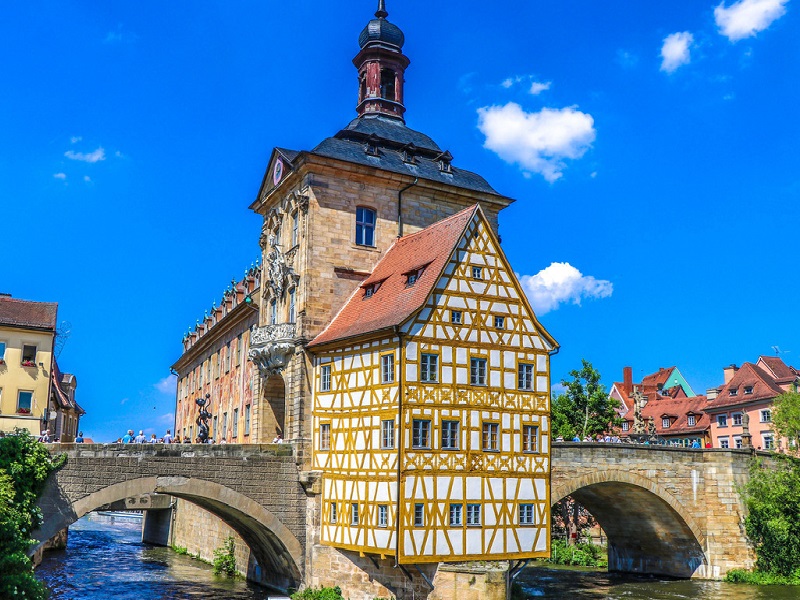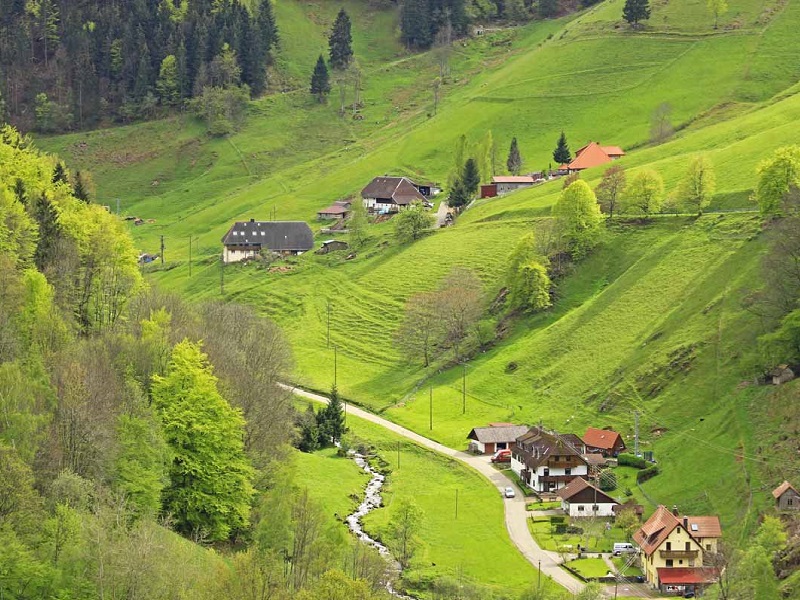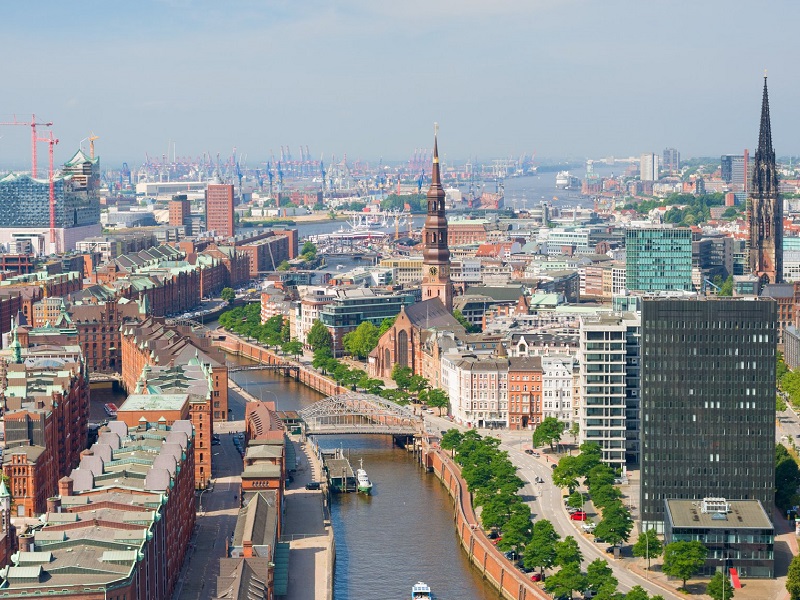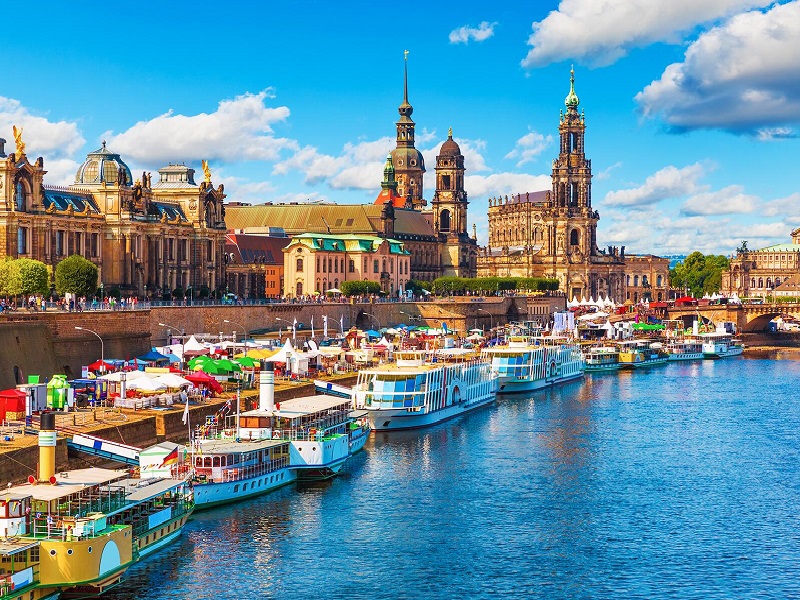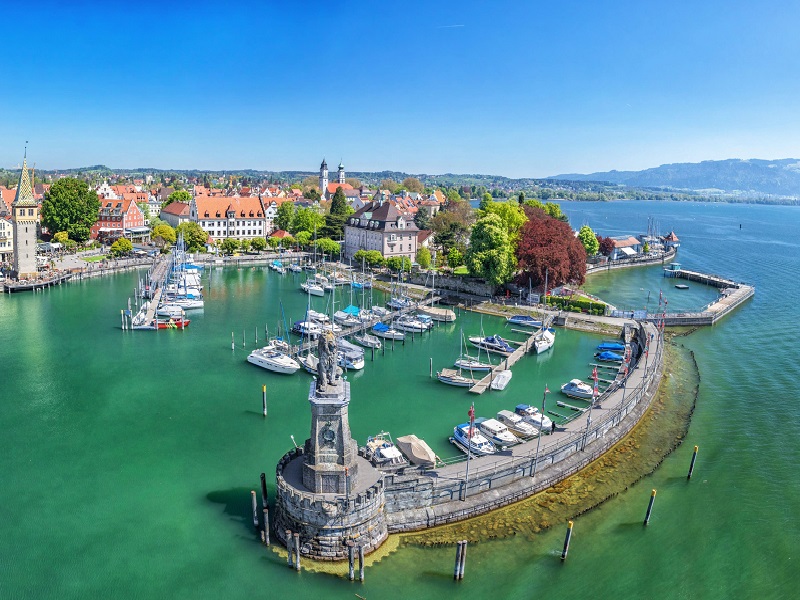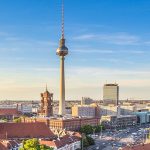Germany is a beautiful country in Western Europe with a rich history, remarkable cities, and beautiful landscapes. With 37.5 million visitors, Germany held 9th place on UNWTO’s list of the most visited countries in the world, and among the must-include places in Europe tour packages. With its many historic cities and small towns, along with an abundance of forests and numerous UNESCO World Heritage Sites, visitors are spoiled for choice when it comes to choosing some places to visit in Germany. So, to help you narrow down your options, here is the list of the best places to visit in Germany during your next trip to Europe.
Berlin
Berlin, the capital city of Germany, is one of the most stunning cities in Europe, and among the must include places in Germany tour packages. Once the symbol of the Cold War, this German capital is now a cultural city always on the move and a budget traveler’s paradise as the city offers something for every kind of traveller from vivacious nightlife to more than 170 world-class museums, galleries, and philharmonics, and from stately relics. Many tourists are drawn to Berlin due to its famous historic structures, which include the Brandenburg Gate, Reichstag, Berlin Wall, and the Holocaust Memorial. One can also visit Museum Island in the Spree River, and the fabulous East Side Gallery to see paintings by artists from all over the world as part of Berlin tour packages. Besides, the city also hosts annual festivals such as the Long Night of the Museums, Carnival of Cultures, and the dazzling Berlin Film Festival.
Cologne
Founded by the Romans, Cologne is an important religious center as well as one of the oldest cities in Germany. Situated on the Rhine River in North Rhine-Westphalia, the city’s skyline is dominated by famous Cologne Cathedral, a UNESCO World Heritage Site which also houses the Ottonian Gero Cross- the oldest large sculpture of the crucified Christ, north of the Alps. Beyond this epic landmark, the other things to do in Cologne include exploring its ancient Roman remains, magnificent Baroque palaces, and countless museums and art galleries. If you happen to be in Cologne in November, don’t miss the Cologne Carnival, one of the greatest street festivals in Europe. Besides, the city of Cologne is known for its unique beer, called Kolsch.
Munich
Renowned as the hub of European architecture and culture, Munich is the third-largest city in Germany, and among the top cultural destinations in Europe. The Bavarian capital that spreads along the banks of Isar River, presents a fascinating contrast of history and modernity in its architectural wonders like Neuschwanstein Castle, the Glockenspiel, the Frauenkirche, etc. Munich is also home to many universities, theatres, numerous art galleries, and world-class museums. The Deutsches Museum, the largest and one of the oldest museums in the world, Marienplatz, Theatinerkirche, Glyptothek Museum, St Peter’s Church, City Museum of Munich, the BMW Museum, and The Residenza are some popular places to visit in Munich. Besides, Munich is a place where age-old traditions are juxtaposed with a progressive outlook. The beer-fueled Oktoberfest is a centuries-old Bavarian tradition and is one of the most revered festivals in the world which draws nearly eight million visitors every year.
Rhine Valley
Though there are many places along this majestic river, the lovely Upper Middle Rhine Valley section, designated a UNESCO World Heritage Site, is probably the most popular spot for tourists to visit. Stretching between the cities of Bingen and Bonn, this dramatic 65 km long Rhine Valley features a spectacular landscape dotted with medieval castles, picturesque villages, and terraced vineyards. The historic town of Bingen, where the river cuts through a deep gorge before entering the Bacharach valley, is a good place to start. Lorelei, the deepest and most narrow section of the Rhine Gorge, which features a large, treacherous rock that caused several boating accidents before the 19th century, is the region’s most famous natural attraction. Although there are also highways and trains that run along both sides of the river, the best way to experience the Romantic Rhine is by a riverboat cruise. Besides, tourists also explore the beautiful region by scenic walking trails and cycling routes.
Regensburg
Lies at the meeting point of the Danube, Naab, and Regen Rivers, Regensburg in Bavaria is one of the oldest towns of Germany, and among the popular places to visit as part of Germany packages. This Bavarian town was founded by the Romans in 179 AD and is overflowing with medieval charm and vibrant student life. Regensburg is a treasure trove for culture and history lovers as it boasts countless churches, chapels, and monasteries. The most remarkable sights to visit here are the 310-meter-long Stone Bridge (Steinerne Brucke) over the Danube River, and the 13th-century Cathedral of St. Peter, whose marvelous Gothic spires dominate the cityscape. Besides, Regensburg also has a laidback, youthful feel, as well as a lively cafe and bar culture.
Rothenburg ob der Tauber
Rothenburg is a medieval town located in the Franconia region of Bavaria. Overlooking the banks of the Tauber River, the old Franconian imperial city of Rothenburg is one of the most attractive places to visit on Germany’s famous Romantic Road. Rothenburg is known for its well-preserved medieval architecture, half-timbered houses, charming cobbled streets, lamp-posts, old medieval museums, and beautiful old churches. Among them is Kirchengemeinde St. Jakob (St. Jacob’s Church) which sits in the Marktplatz, and the nearby Rathaus (Town Hall) boasts a 50-meter-high tower that offers fantastic panoramic views over the city. Simply taking a stroll along the old streets past these beautiful buildings is a timeless experience. Come December, Rothenburg ob der Tauber plays host to a world-famous Christmas Market.
Bamberg
Located in southern Germany in the north of Bavaria, Bamberg is a central European town built on seven hills with various canals and the Regnitz river running through it. Once the seat of the Roman Catholic Archdiocese of Bamberg, and the center of the Holy Roman Empire, Bamberg is the most important town in Upper Franconia and is one of the best-preserved old towns in Germany. This old imperial city is often referred to as the Rome of Franconia due to its medieval and baroque masterwork chock-full of Unesco-listed townhouses that were mercifully spared the destruction of World War II. The narrow medieval streets of UNESCO-protected Altstadt dotted with elaborate mansions and beautifully preserved half-timber structures are particularly enthralling to explore. One can also visit an impressive Bamberg Cathedral and the Old Town Hall here as part of Germany tour packages. But no visit would be complete without seeing the dreamy rose garden at the New Residence Palace.
The Black Forest
Extending 160 km from Pforzheim in the north to Waldshut on the High Rhine in the south, the beautiful Black Forest with its dark, densely-wooded hills is one of the most visited upland regions in all of Europe, and among the top Germany tourist places to visit, especially for hikers. The region is also home to several picturesque villages including Freiburg, the ‘Jewel of the Black Forest’, and the world-famous thermal spa town of Baden-Baden, which dates back more than 2,000 years. In addition, centuries-old abbeys, monasteries, scenic vineyards, fairytale castles, and modern ski resorts can be found here and there, as well. Other highlights include the spectacular Black Forest Railway centered on Triberg with its famous falls, and Triberg itself, home to the Black Forest Open Air Museum. A great introduction to the Black Forest is driving along its scenic Black Forest Panoramic Route, a 70 km driving tour that takes in the very best views over the region, along with its top historic attractions.
Hamburg
Set on the banks of the River Elbe, Hamburg is the second-largest city in Germany and the third biggest port in Europe. The city has been nicknamed the ‘Venice of the North’ due to the Elbe river and hundreds of canals that flow through the city center. With an area encompassing 100 sq. km, the Hamburg port is popular for its preserved old Warehouse District that now houses everything from towering skyscrapers, modern glass facades, and airy promenades, with a shimmering concert hall designed by Swiss architects Herzog & de Meuron, along with several art galleries and museums, including the excellent International Maritime Museum. Besides, the city has an abundance of parks and green spaces, a treasure-packed historic center, and more bridges than any other city in the world. Hamburg is also famed for its seedy red-light district, where you can find live music venues, cool cocktail bars, and trendy clubs.
Dresden
Nestled prettily on the banks of River Elbe in eastern Germany close to the Czech border, Dresden, the mighty capital of Saxony, is a city full of life and one of the most prestigious cultural centers in Germany. Earlier, Dresden was known as the Jewel Box of Germany because of its lavish collection of stunning art and architecture. Almost completely destroyed by bombing during WW II, it has been rebuilt splendidly to reflect its original magnificence. The city features a remarkable amount of facades and edifices adorned with incredible architectural details such as the astonishing Zwinger Palace, the impressive Brühl’s Terrace, or the stately Dresden Frauenkirche, a Lutheran church that dominates the city’s skyline. Impressive art galleries and museums abound in the city, particularly the Green Vault, which houses thousands of exquisite precious gems, jewelry pieces, and fine artworks. As an important cultural center, Dresden boasts many cultural institutions of which the Semper Opera is most widely esteemed. The city plays host to several annual events that include the Dixieland Festival, Europe’s largest Jazz festival.
Lake Constance
Bordering Germany, Austria, and Switzerland, Lake Constance is the third-largest lake in Central Europe, and one of the most popular holiday destinations in Germany. It is made up of three main parts, with the Obersee or ‘Upper Lake’ connected to the Untersee (Lower Lake) by Seerhein, a small section of the Rhine River. Blessed with crystal clear waters, mild and sunny climate, and amazing scenery, it is an ideal place for swimming, sunbathing, and sailing. One can also hop in a boat and venture to Insel Mainau, also known as the flower island, one of the lake’s scenic islands. Spring is the best time to visit this island when thousands of flowers begin to bloom, such as tulips, rhododendrons, roses, and a great number of exotic plants. Besides, the lake is also famed for its picturesque towns and villages dotted on its shores. Tourists can explore the lively and historic university city of Konstanz and the idyllic island town of Lindau on the German side and stunning views of the lake can be enjoyed from atop the 2,500 m high Santis Mountain on the Swiss side as part of Germany holiday packages.
